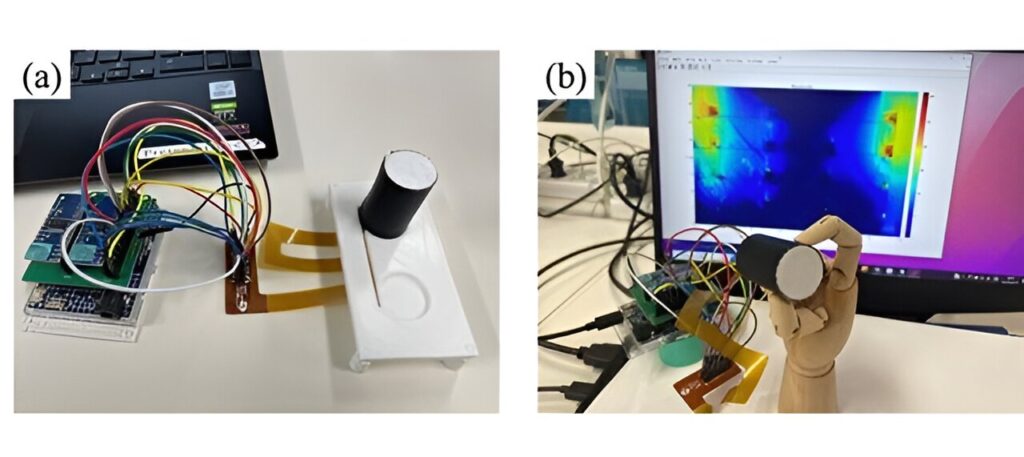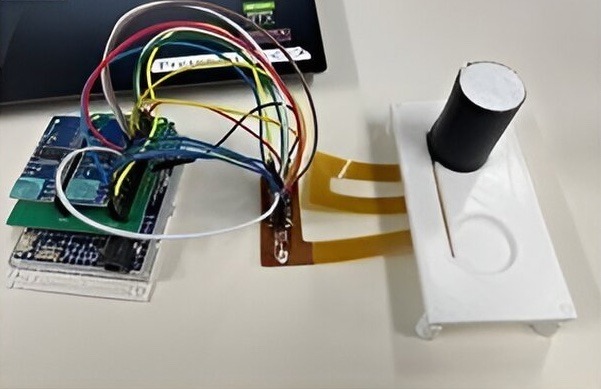
Fine motor skills correlate strongly with cognition and the accurate assessment of an individual’s motor skills can be critical in diagnosing and treating a variety of conditions. But objective evaluation has been a challenge, as suitable sensors weren’t available. To help medical professionals better test fine motor skills, a team of researchers from Japan’s Shibaura Institute of Technology developed a new EIT-based tactile sensor system.
EIT (electrical impedance tomography) is traditionally used for non-invasive medical imaging of human body parts, but here it is used to image the internal structure of the sensor body in order to classify fine finger movements. When a subject pinches the sensor, for example, they deform the structure and that alters the voltage between the sensor’s 16 electrodes. Each finger movement or grip creates an identifiable pattern of voltages, enabling classification and therefore assessment.
This only works if the system can collect precise voltage readings from the electrodes, so the researchers turned to an Arduino UNO R4 Minima board for the task. The electrodes connect to the Arduino’s 14-bit ADC (analog-to-digital converter) through multiplexer chips, so the system can quickly scan through all 16 electrodes. It would be easy to expand that number in the future to produce more detailed images. After collecting the data, the team was able to utilize conventional EIT image reconstruction techniques for classification and even classify the voltage readings directly.
With the latter technique, the researchers reported 94.1% classification accuracy in testing of 12 subjects performing six unique motions. More details on the work can be found in the team’s paper here.
Image credit: R. Asahi, S. Yoshimoto and H. Sato, “Development of Pinching Motion Classification Method Using EIT-Based Tactile Sensor,” in IEEE Access, vol. 12, pp. 62089-62098, 2024, doi: 10.1109/ACCESS.2024.3395271
